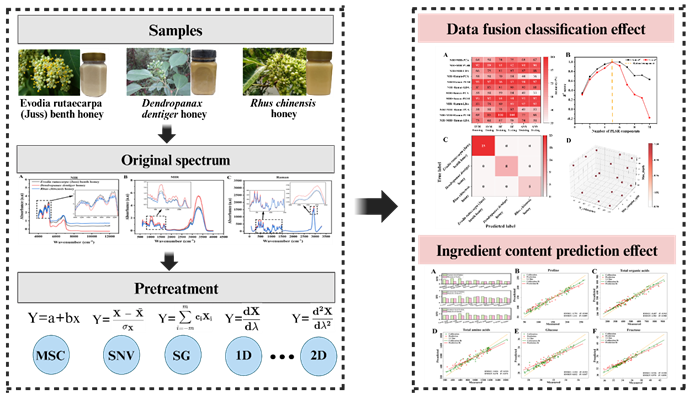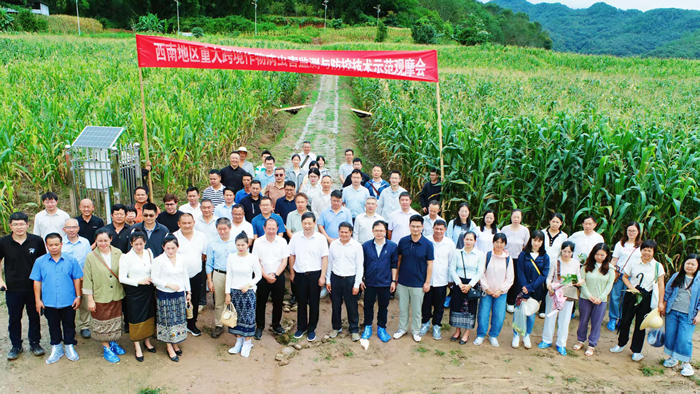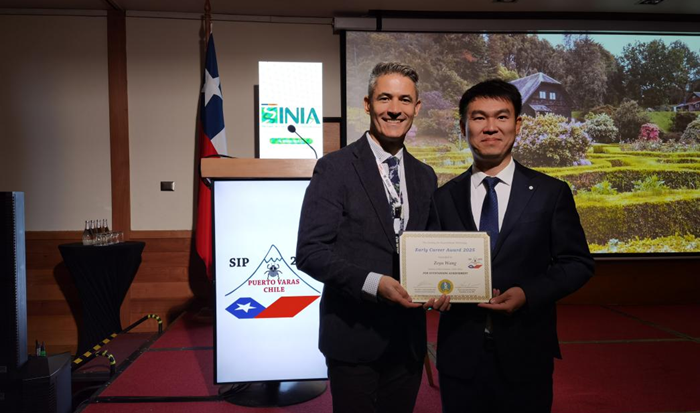Machine Learning Combined with Multispectral Fusion for Predicting Floral Origins and Taste Components of Apis cerana Honey
Recently, the Resource Insect Product Processing and Functional Evaluation Team of the Institute of Apicultural Research, Chinese Academy of Agricultural Sciences, proposed a strategy combining machine learning and multispectral fusion to achieve accurate prediction of floral origins and main taste components of Apis cerana (A. cerana) honey. The relevant results were published in Food Research International.
In recent years, A. cerana honey has attracted increasing attention from consumers and researchers due to its rich floral sources, unique flavor, and high nutritional value. However, due to the diverse floral origins and complex chemical composition of A. cerana honey, traditional detection methods have limitations such as large sample consumption, low detection efficiency, and difficulty in simultaneously achieving variety identification and taste component prediction.

This study explores the use of near-infrared (NIR), mid-infrared (MIR), and Raman spectral fusion for the rapid prediction of floral origins and main taste components in Apis cerana (A. cerana) honey.
Feature-level fusion with the partial least squares regression - random forest (PLSR-RF) model achieved 100 % classification accuracy in identifying floral origins.
Additionally, the model demonstrated strong predictive capability for sugars, amino acids, and organic acids, with R2 values ranging from 0.88 to 0.96, and performed exceptionally in predicting total organic acids and amino acids (R2 of 0.94 and 0.93, respectively). The PLSR-RF model showed effective clustering for proline, glucose, and fructose, achieving a 23.5 % improvement in predictive accuracy compared to data-level fusion. These findings confirm the efficacy of the PLSR-RF model for quantitative analysis of A. cerana honey.
The results demonstrated that multi-source spectral fusion combined with machine learning algorithms has advantages in discriminating floral origins and predicting taste components of A. cerana honey, providing effective technical support for rapid and non-destructive quality evaluation and variety traceability of A. cerana honey.
This study was supported by projects including the National Natural Science Foundation of China, the National Key Research and Development Program of China, and the National Modern Apicultural Industry Technology System.
Article Link: https://doi.org/10.1016/j.foodres.2025.116102
-
 Sep 23, 2025Mongolia National Reference Laboratory for Food Safety and Institute of Quality Standards and Testing Technology for Agro-products Launched Strategic Collaboration
Sep 23, 2025Mongolia National Reference Laboratory for Food Safety and Institute of Quality Standards and Testing Technology for Agro-products Launched Strategic Collaboration -
 Sep 11, 2025IPPCAAS Advances Joint Prevention and Control of Transboundary Crop Pests and Diseases in Southwest China — Field Demonstration on Monitoring and Control Technologies Held in Jiangcheng, Yunnan
Sep 11, 2025IPPCAAS Advances Joint Prevention and Control of Transboundary Crop Pests and Diseases in Southwest China — Field Demonstration on Monitoring and Control Technologies Held in Jiangcheng, Yunnan -
 Aug 29, 2025IPPCAAS Expert Wins the Society for Invertebrate Pathology Early Career Award
Aug 29, 2025IPPCAAS Expert Wins the Society for Invertebrate Pathology Early Career Award -
 Jul 09, 2025CAAS President meets with WUR Executive Board Member
Jul 09, 2025CAAS President meets with WUR Executive Board Member -
 Jul 09, 2025CAAS President Meets with AAS President
Jul 09, 2025CAAS President Meets with AAS President
